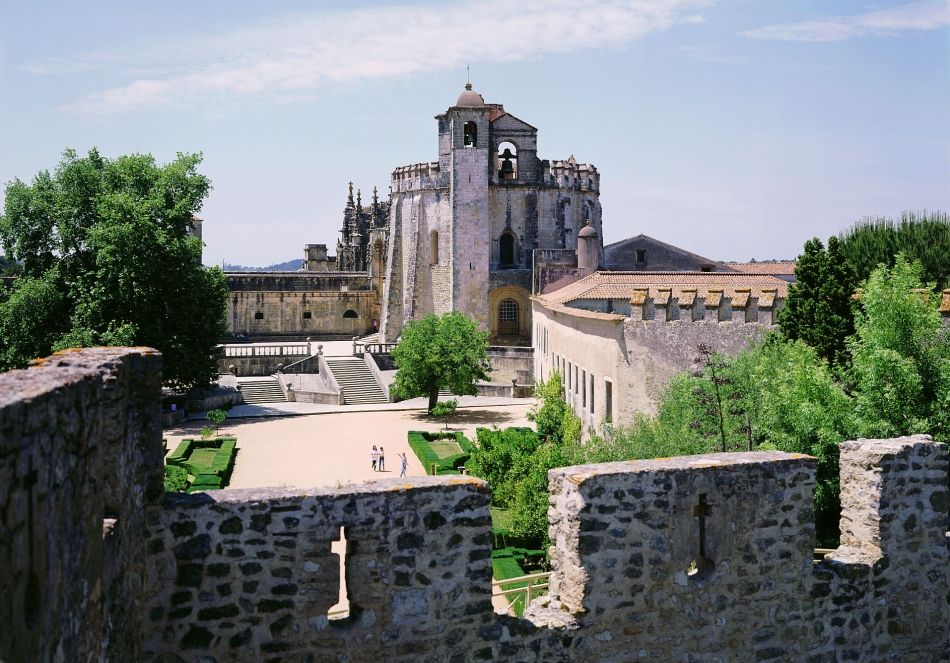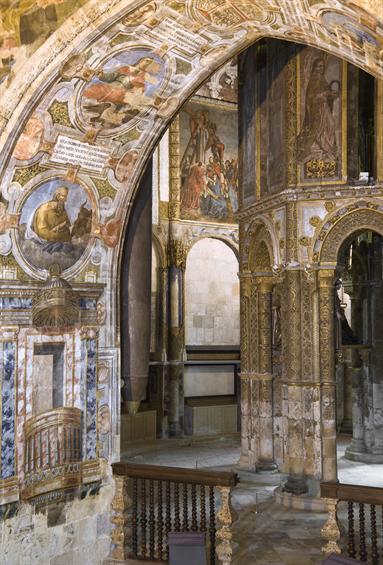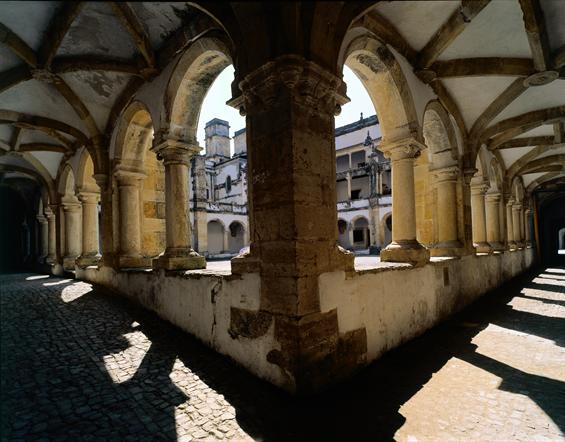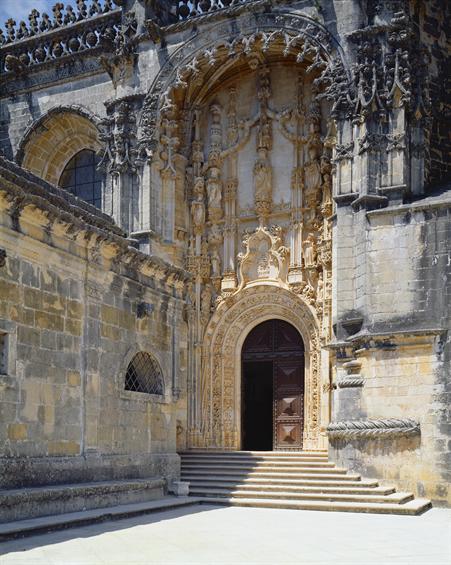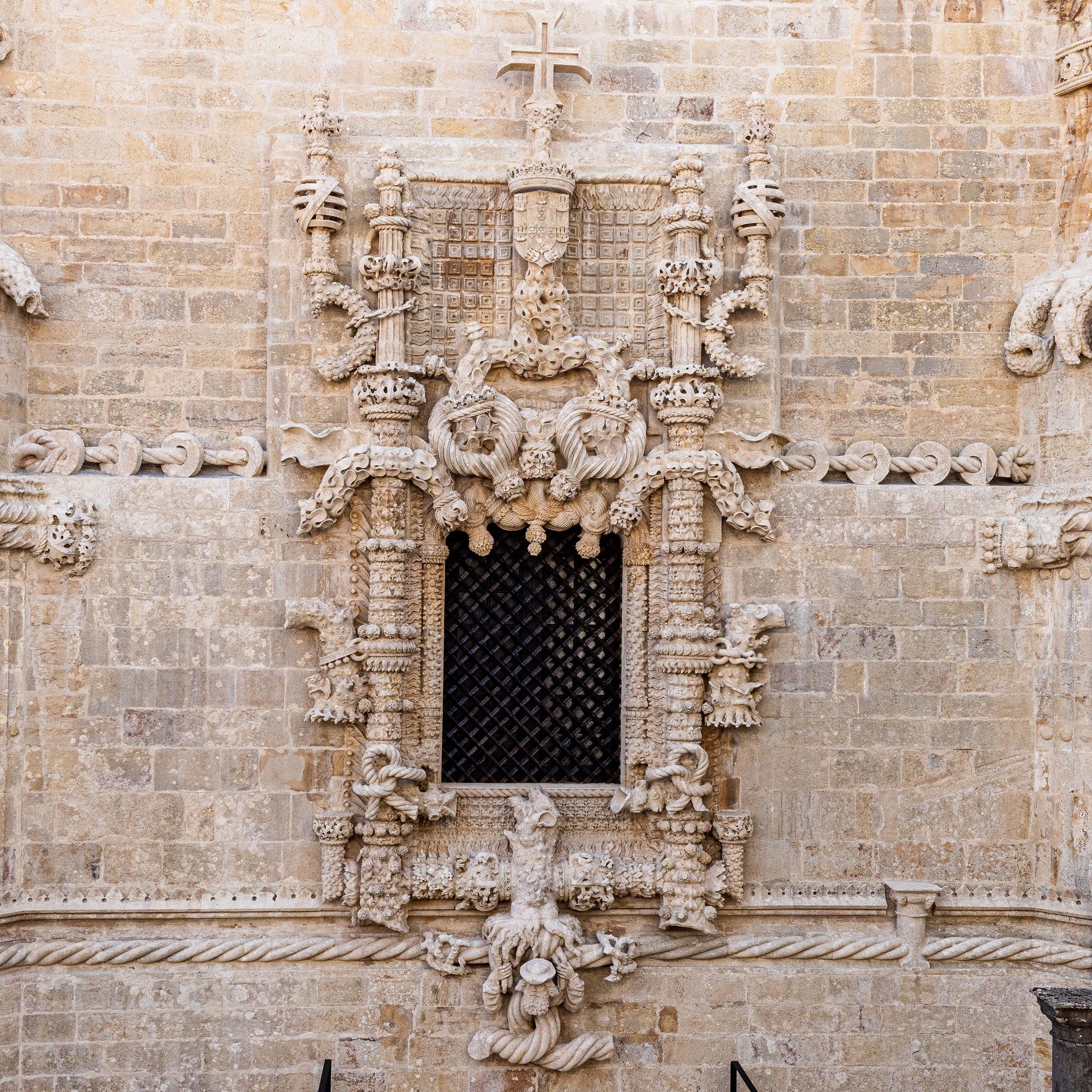The Convent of Christ refers to a grand complex that includes the Templar Castle of Tomar, the Renaissance Convent of the Order of Christ, the convent enclosure, currently known as Seven Hills Forest, the Hermitage of the Immaculate Conception, and the conventual acqueduct also known as the Pegões Aqueduct. Inscribed on the UNESCO World Heritage List in 1983, it integrates some of the most important testimonies in the history of Portuguese architecture. The seven centuries it took to be built cross the most significant moments in the History of Portugal.
The Castle emerged in 1160 with the foundation of Tomar by the Templars. After the extinction of the Templars in 1312, it became the seat of the Order of Christ and under the administration of Infante D. Henrique (1420-60) the conventual rooms were built around two cloisters of Gothic expression: the cloister accommodation the Washing area and the Cemetery.
The Charola, one of the rare and emblematic round-shape temples of medieval Europe, was inspired by the Paleochristian basilica of Jerusalem's Holy Sepulchre. The entrance to Charola was facing east, until the works of D. Manuel I (1469-1521) established the new entrance facing south, in the nave that expanded the oratory to the west, through a triumphal arch. The Manueline nave, the work of Diogo de Arruda (1510-13) completed by João de Castilho (1513-15), offered the convent church with wider spaces for the liturgical function. Thus, past Charola we find a main hall, a sacristy room on a half-basement floor and, above it, the church choir. This space became known as the High Choir and the sacristy as the Chapter Room. .Located in this room is the Chapter Window, a symbol of Portuguese maritime expansion and the imperial vision that the Venturous King had for Portugal.
When D. João III became king of Portugal, in 1528, he built a new and grandiose convent facing west around the church enlarged by D. Manuel I. The rooms of the new monastic complex were arranged around five cloisters of Renaissance trait.
When king Filipe of Spain ascended the throne of Portugal (1580-1640), new constructions continued on the convent started by King João III. The Main Cloister was completed and in the Cemetery Cloister a New Sacristy was built in Mannerist. The south façade was altered by the arcade of the grandiose Pegões Aqueduct, the most remarkable work of the period of the Spanish king Filipe.
